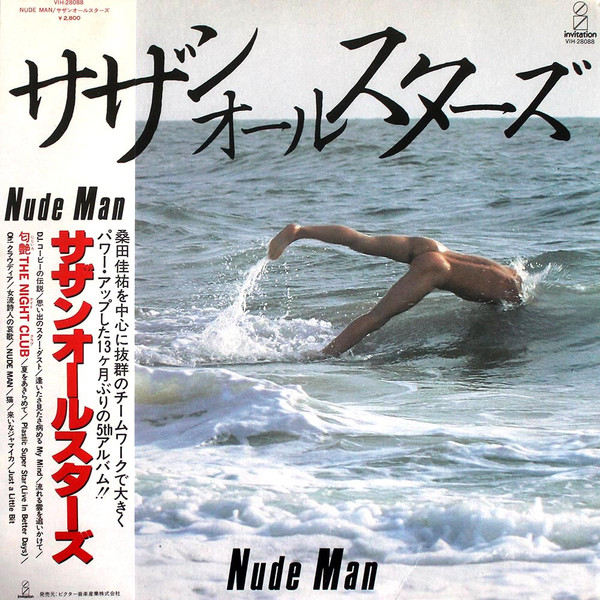
The Blues are the cornerstone of American music. Artists like Muddy Waters and B.B. King laid the foundation for what we would eventually call Rock & Roll. Although the genre’s popularity waned over the decades, it experienced a significant revival in the 1980s, carried by the passion and soul of artists such as Stevie Ray Vaughan and Robert Cray.
Color me surprised, then, when I discovered that the Blues also found a new home across the Pacific—in the bustling streets of Osaka. By the 1970s, a thriving underground scene had taken root in the Kansai region, where bands like Funny Company, West Road Blues Band, and Masaki Ueda’s South To South reinterpreted the genre through a distinctly Japanese lens. They didn’t just imitate American forms—they injected their own regional flavor, blending Kansai’s rough-and-ready spirit with the raw emotion of Delta and Chicago blues.
Among these groups, one of the most famous names to emerge was Ukadan (憂歌団). Founded by Mitsuki Kimura (木村充揮) and Kantaro Uchida (内田勘太郎), the band began performing in the early 1970s under the heavy influence of American blues musicians. But unlike many copy bands of the era, Ukadan adapted the blues to the Kansai dialect and daily life. Their performances carried what critics called the “smell of the street,” making their music resonate deeply with ordinary listeners.
The best example is their 1975 debut single “Osōji Obachan” (“Cleaning Lady”)—a satirical take on the life and personality of an Osaka cleaning woman. While catchy and full of swagger, the song was banned from airplay just a week after release, accused of mocking working-class women. Ironically, the controversy only cemented Ukadan’s reputation as a band unafraid to push boundaries.
Over the next decade, their name became synonymous with Japan’s homegrown blues. That reputation reached its peak in June 1988, when Ukadan became the first Japanese band ever to perform at the Chicago Blues Festival, standing shoulder to shoulder with the music’s originators. That same year, they released their most iconic album, simply titled “BLUE’S”. Produced by famed lyricist Chinfa Kan, this record confirmed their place not just in Japanese music history, but in the global story of the blues.
THE MUSIC
- 大阪ビッグ・リバー・ブルース⭐⭐⭐⭐⭐
- ちっちゃなダイヤモンド / Little Diamond⭐⭐⭐⭐⭐
- 二人でいようよ/ Let's be together ⭐⭐⭐⭐
- かぞえきれない雨⭐⭐⭐⭐⭐
- 働け、ブルース・バンド⭐⭐⭐⭐
- 木綿のシャツをつくっておくれ / Make me a cotton shirt⭐⭐⭐⭐
- オンリー・ロンリー・ジャマイカ⭐⭐⭐⭐
- Fisherman's Blues⭐⭐⭐
- Angel On My Shoulder⭐⭐⭐⭐⭐
- とどかぬ想い~I Say Love You, Only~⭐⭐⭐⭐⭐
THE VERDICT
I wasn’t sure what I expected going into this one. The opening track, “Osaka Big River Blues,” immediately reminded me of Masaki Ueda’s signature ballad, “Osaka Bay Blues.” Honestly? It’s just as good. Something about Kimura’s raspy vocals evokes the grit of Howlin’ Wolf or Joe Cocker, perfectly matching the band’s down-to-earth style.
Songs like “Little Diamond” use the metaphor of a diamond to describe the precious, irreplaceable things we hold in our daily lives. That kind of lyricism, paired with Ukadan’s gritty blues-rock instrumentation, shows their intimate understanding of what the blues is really about—turning ordinary struggle and longing into something universal.
“Countless Rain” (かぞえきれない雨) is another standout, a deeply evocative blues ballad that channels heartbreak and isolation through weather imagery. The rain becomes a relentless force, pounding at the narrator’s heart like unshakable sorrow. Pair that with a lonely highway at night, and you’ve got a song that hits as both raw poetry and a badass driving soundtrack.
Funny enough, with most J-rock bands I encounter, this album veers into other genres with equal quality. “Let’s Be Together” (二人でいようよ) drifts into a light, breezy bossa nova, the kind of track you’d hear in a quiet coffeehouse. Meanwhile, “Make Me a Cotton Shirt” (木綿のシャツをつくっておくれ) plays like a jazz standard lifted straight from the Great American Songbook, warm and timeless.
That’s what makes diving into albums like this so rewarding: discovering the many ways American music gets reinterpreted through the lens of another culture. Ukadan don’t just cover the blues—they live it, while bending its vocabulary into something distinctly their own.





No comments:
Post a Comment